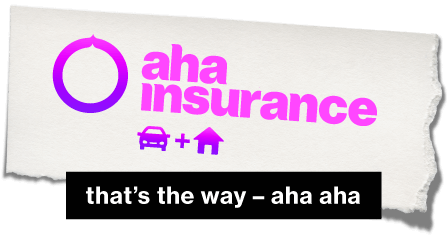Car insurance Toronto, ON
Part of a series on car insurance rates in Ontario.

Car Insurance Toronto FAQs
Is car insurance required in Toronto?
In Toronto, all drivers must possess car insurance that meets the minimum requirement of third-party liability coverage, which safeguards against bodily injury or property damage caused to others in an accident. The minimum coverage amount for third-party liability in Ontario is $200,000. Additionally, drivers must include accident benefits coverage, direct compensation—property damage coverage (DCPD), and uninsured motorist coverage in their policies.
Toronto drivers can add extra coverage, such as collision and comprehensive insurance, though costs can vary based on factors like driving history and vehicle type. To ensure appropriate coverage, consulting an insurance broker is advisable. They can provide expert guidance in selecting the most suitable coverage options available in Toronto, helping you make informed decisions about your car insurance coverage.
How can I save on car insurance in Toronto?
To help cut down on your car insurance expenses in Toronto, consider the following steps. First, conduct thorough research and gather quotes from various insurance providers to compare rates and coverage options. Different companies evaluate risk factors differently, so exploring multiple choices can aid in finding a more budget-conscious solution. Additionally, explore the potential advantages of bundling insurance policies, such as combining your car insurance with home or renters insurance, which often results in discounted rates.
Next, emphasize maintaining a clean driving record by adhering to safe driving practices to avoid traffic violations and accidents. This effort can contribute to decreased insurance premiums over time. Furthermore, contemplate adjusting your deductible – opting for a higher amount might lead to reduced monthly payments. Outfitting your vehicle with safety features, enrolling in defensive driving courses, and limiting your mileage could also render you eligible for potential discounts. Ultimately, evaluating your coverage requirements and seeking guidance from insurance professionals can assist in tailoring a cost-effective insurance plan tailored to your situation in Toronto.
How do I get car insurance as a new driver in Toronto?
Getting car insurance as a new driver in Toronto involves a step-by-step process. Begin by researching insurance companies that cater to new drivers. Determine the coverage you need, gather personal and vehicle information, and request quotes from multiple insurers. Compare quotes and coverage options, considering potential discounts for new drivers. If needed, consult an insurance broker for guidance. Once you’ve chosen a policy, review and sign the agreement, make the payment, and receive proof of insurance.
Remember that car insurance is typically renewed annually. Stay informed about your coverage and explore options to ensure you’re getting the best value for your needs. With research and careful consideration, you can navigate the process and obtain the necessary coverage as a new driver in Toronto.
What type of car insurance does aha insurance offer in Toronto?
Aha insurance offers both mandatory and optional coverage in Toronto. Below is a summary of the most popular insurance coverage options.
Mandatory Coverage
Third-Party Liability Coverage
This mandatory coverage ensures protection in cases where you cause harm or damage to others while operating your vehicle. It covers legal fees, settlements, and claims up to the mandated minimum coverage limit of $200,000. Possessing third-party liability coverage provides you with the reassurance to drive confidently, equipped with essential coverage to address potential liabilities that might arise on Toronto’s roads.
Accident Benefits Coverage
This coverage encompasses an array of advantages, including medical expenses, rehabilitation costs, income replacement, and other associated financial outlays
stemming from an accident. With accident benefits coverage, Toronto residents can access indispensable support and financial assistance to facilitate their recovery and address the economic ramifications of their injuries.
Uninsured Motorist Coverage
In Toronto, uninsured motorist coverage provides protection in the event of an accident involving an uninsured, underinsured, or hit-and-run driver. This coverage offers security when the responsible driver lacks adequate insurance to cover your injuries or damages. In such scenarios, uninsured motorist coverage intervenes to compensate for your losses, encompassing medical expenses, vehicle repairs, and other relevant costs.
Direct Compensation-Property Damage (DC-PD) Coverage
DC-PD coverage comes into play when your vehicle sustains damage in an accident caused by another party. With DC-PD coverage, you can receive compensation directly from your insurance provider, eliminating the need to file a claim against the at-fault driver. This approach offers a streamlined method to repair or replace your vehicle, saving you time and effort.
Optional Coverage
Comprehensive Coverage
This is an optional facet of car insurance that offers comprehensive protection against damage to your vehicle resulting from factors other than collisions. This coverage encompasses a wide range of non-collision events, including theft, vandalism, fire, hail, falling objects, and damage resulting from animal interactions. Similar to collision coverage, comprehensive coverage assists in addressing the expenses related to repairing or replacing your vehicle, taking into account its current market value and the deductible you have selected.
Collision Coverage
Collision coverage is a selection available within auto insurance that provides financial security against damages to your vehicle caused by collisions with other vehicles or objects in an at-fault accident. This coverage helps manage the costs associated with repairing or replacing your vehicle up to its prevailing market value while considering the deductible amount you have chosen.
Specified Perils Coverage
In Toronto, specified perils coverage is available in auto insurance that provides specialized protection against a predefined list of risks detailed in your policy. These risks often include specific perils such as fire, theft, hail, lightning, and other perils explicitly specified within the policy. Opting for specified perils coverage ensures coverage for damages stemming from the hazards explicitly mentioned in the policy, although damages caused by other perils might not fall under its coverage.
All Perils Coverage
All perils coverage presents a comprehensive and inclusive category of auto insurance that combines collision and comprehensive coverage. Selecting all perils coverage protects against a wide array of risks, including collisions, theft, fire, vandalism, and other perils, unless explicitly excluded in the policy. This coverage offers a more thorough and all-encompassing level of protection for your vehicle.
What factors affect my Toronto car insurance premium?
Your car insurance premium in Toronto is affected by a multitude of factors that collectively define your level of risk as a driver. Being familiar with these factors can
empower you to make informed decisions to control and minimize your insurance expenses. Below, you’ll find a list of factors that insurance companies take into consideration when determining your insurance premiums.
Driving Record
Your history on the road holds substantial sway over your premium. Insurance providers evaluate your past involvement in accidents, claims, and traffic violations to gauge your risk profile. A clean driving record devoid of accidents or infractions suggests responsible driving behaviour and can lead to lower premium rates. Conversely, a record marked by accidents or speeding tickets may result in higher premiums due to the perceived heightened risk associated with your driving.
Age and Experience
Inexperienced and younger drivers often face higher premiums. This is grounded in statistical data showing that younger drivers are more prone to accidents. As you accumulate driving experience, you might observe a decrease in premiums as your driving skills improve and your risk diminishes.
Vehicle Type
The nature of your vehicle can significantly impact your premium. High-performance or luxury vehicles tend to incur higher insurance costs due to the expense of repairing or replacing their specialized parts. Moreover, certain vehicle models may be more attractive to thieves, elevating the risk of theft-related claims.
Coverage and Deductibles
The choices you make regarding coverage and deductibles directly shape your premium. Opting for higher coverage limits or lower deductibles signals a reduced willingness to shoulder risk out of pocket, often leading to higher premiums. Conversely, selecting higher deductibles can contribute to lower premiums, as you’re agreeing to assume a greater share of potential costs in case of a claim.
Location
Your place of residence and where you park your vehicle wield considerable influence over your premium. Urban locales characterized by higher traffic density and accident
rates generally incur higher premiums. Similarly, areas with an elevated incidence of vehicle theft or vandalism can result in increased costs.
Annual Mileage
The number of miles you drive annually is taken into account when calculating your premium. Insurance companies consider that increased mileage translates to a higher likelihood of accidents. If you undertake frequent long commutes or extended journeys, your premium could reflect the heightened exposure to potential risks.
Coverage Types
The coverage types you select also bear weight on your premium. Comprehensive and collision coverage, which provides additional protection for your vehicle, typically translates to higher premiums than basic liability coverage.
Insurance History
Consistency in maintaining insurance coverage without lapses can influence your premium. A continuous coverage history reflects responsible behaviour and is often associated with lower risk.
Fast facts about auto insurance in Toronto
Average annual car insurance rate
Regular drivers in the city
Collisions per year (approximately)
%
Collision rate for the city (approximately
Average age
Average household income
%
Unemployment rate
Population
Understanding car insurance in Toronto, Ontario
Toronto is one of the most interesting places for car insurance. On one hand, it has a high collision rate (including all of the boroughs like Scarborough and North York). On the other hand, it has one of the best public transit infrastructures in the entire country.
This means you need to take the averages with a grain of salt. Toronto’s boroughs each have their own average car insurance rates, collision rates, and claims rates. These include:
- York
- North York
- East York
- Scarborough
- Etobicoke
That doesn’t include daily commuters from the other cities on the outskirts of the GTA, like Burlington, Pickering, or Markham.
A lot of people take the subway and busses, too, which drives down the amount of road exposure in the downtown core (and therefore risk). The high collision rate for the city can definitely be attributed to the high amount of commuter traffic entering the city and travelling through the other boroughs.
In contrast, the boroughs around the downtown core rely on highways to get around, which have high accident rates on their own. The many commuters in these parts of Toronto also spend hours on the road every day, which represents a much higher insurance risk than someone who drives 10 minutes to work.
Get your bundle on & save!
Want even cheaper insurance? Save up to 50% on home and up to 15% on car insurance when you bundle them.

Get your bundle on & save!
Want even cheaper insurance? Save up to 50% on home and up to 15% on car insurance when you bundle them.

Busting myths about driving and insurance in Toronto
Myth: Nobody really uses streetcars.
Wrong. Streetcars are still one the main methods of transportation in the downtown core, and they’re not just for tourists. Locals use streetcars regularly across 11 different lines of the city. That means you can expect them to stop and let people out.
Pro tip: you need to stop for them, too!
Myth: Cycle lanes are suggestions.
Don’t park in cycle lanes or else you’ll find your car ticketed, if not towed away. It is possible for a car to enter the cycle lanes (sometimes necessary for right-hand turns), but only if you’ve yielded to cyclists in that lane. P.S. Opening your car door on cyclists (called a “door prize” by some locals) will net you a $365 fine.
Myth: Pedestrians automatically have the right of way.
Not true. While pedestrians often do have the right of way while crossing the road, they might not if they entered road space unlawfully. They lose the right of way if they don’t have a clear and solid “walk” signal from the crosswalk. And no, stepping onto the road during the crosswalk countdown isn’t lawful, according to Staff Sergeant Bulmer of the York Police Force.
Myth: Every season is construction season.
This one is debatable. Toronto’s construction is notorious for feeling like it’s happening everywhere all at once, but this feeling has become more of a recent phenomenon. 2019 marks Toronto’s busiest construction season yet, with $1 billion being invested into the city’s infrastructure.
How Toronto’s rates compare to other cities in Ontario
- North York: $4,261
- Etobicoke: $4,199
- Brampton: $4,071
- Scarborough: $3,825
- East York: $3,605
- Woodbridge: $3,603
- Richmond Hill: $3,579
- Mississauga: $3,473
- Markham: $3,389
- Niagara Falls: $3,321
- Bowmanville: $3,308
- Peterborough: $3,259
- Pickering: $ 3,245
- Newmarket: $ 3,216
- Hamilton: $3,201
- Brantford: $ 3,158
- Maple: $3,150
- Whitby: $3,087
- Ajax: $3,053
- York: $2,999
- Toronto: $2,983
- Barrie: $2,924
- Thornhill: $2,871
- Waterloo: $2,867
- Caledon: $2,780
- London: $2,765
- Fort Erie: $2,720
- Oakville: $2,720
- Sault Ste Marie: $ 2,713
- Kitchener: $2,705
- Milton: $2,680
- St Catharines: $ 2,550
- Windsor: $2,536
- Woodstock: $2,513
- Innisfil: $2,505
- Burlington: $2,476
- Kingston: $ 2,360
- Cambridge: $2,297
- Oshawa: $2,295
- Guelph: $2,268
- Gloucester: $2,256
- Stoney Creek: $2,222
- Nepean: $2,196
- Ottawa: $2,195
- Sudbury: $2,005
- Kanata: $2,002
- Thunder Bay: $1,973
- Wasaga Beach: $1,958
Quick tips on driving in Toronto
Find parking at outer subway stations, then ride the subway into town.
Getting around Toronto in a car is definitely possible, but finding a place to park it once you get where you’re going is another challenge entirely. Don’t try to fight downtown traffic or else you’ll be circling for an hour. Instead, find a place to park in the subway stations around the outer edges of the city and take the subway downtown. It’s even free on weekends in most of those parking lots!
New to town? The Gardiner Expressway is your friend.
Don’t drive through downtown’s traffic lights, crosswalks, or behind stop-and-start streetcars. Instead, just take the Gardiner Expressway across old Toronto. It’s a raised highway that lets you skip over the street-level traffic all the way from Etobicoke to the Studio District in the south end of East York. Use it liberally to save time and to cut down your chances of getting into a collision!
Keep an eye out for streetcars (and don’t pass them).
Toronto still uses streetcars rather heavily, even as other cities around Ontario are proposing and building light-rail transit systems (like Waterloo). You might spot them by their cables moving above the tops of other cars before you even see the streetcars themselves.
It’s important that you don’t try to pass them while stopped, which is illegal (don’t be that guy). To be fair, stopping all traffic so that pedestrians can walk from the middle of the road to the sidewalk is problematic for a city of 2.7 million people, too.
Stop at least two meters behind the doors and you’re golden.
Don’t rely on left-hand turns at big intersections.
Toronto has a lot of big intersections, and they’re filled up to the brim during rush hour (unsurprisingly).
What you might not also know is that certain intersections ban left-hand turns during rush hour periods, which can run much longer than a single hour (naturally).
You’ll see the signs around the intersections if you’re looking for them, but it’s easy to miss them while navigating downtown streets and keeping an eye on every other vehicle on the road.
Sources for fast facts about Toronto:
- Stats Canada, 2016 Census Profile, Toronto
- Ministry of Transportation, 2016 Road Safety Report
- Canadian Broadcasting Corporation, “‘Busiest’ construction season ever underway in Toronto with $1B in projects in the works”
- Toronto.ca, Cycling Education
- YorkRegion.com interview with Staff Sergeant Bullmer, “Police debunk traffic myths”
Source for average insurance rates by city:
- Survey of 2,800 auto insurance policy holders in Ontario

Google Rating: 4.8
Hot Dang! Those are some beautiful words from beautiful people.






























